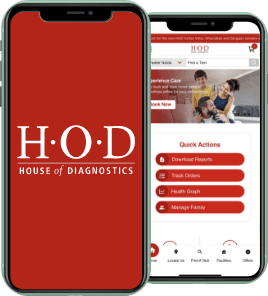

Trending
High-Resolution Computed Tomography (HRCT)
High-Resolution Computed Tomography (HRCT) refers to a CT scan that gives a more precise cross-section image of the lungs than a regular chest CT and chest X-ray. HRCT Chest uses specific technologies for better image resolution with exquisite lung details ideal for assessment. The HRCT scan covers the whole lung tissue which helps the doctors to find the cause of any abnormalities. This modality can be applied in diagnosing both acute and chronic diseases of the lung tissue and airways. HRCT can be more sensitive and accurate in diagnosing diffuse lung disease. Since HRCT can detect even small nodules in the lungs, it can detect severe abnormalities at an early stage and help to plan appropriate treatment.
Why HRCT Chest is done?
HRCT chest scan is considered as a choice of investigation to find out lung abnormalities and unexplained chest complications. Some of the most common uses of the scans include:
- For assessment of lung functioning and risk of development of diffuse lung disease
- To detect airflow obstructions through the lungs
- To find any abnormal tumor growth inside the lungs
- To select an optimal route for biopsy if needed
- To rule out various lungs infection such as pneumonia, bronchitis, tuberculosis, cystic fibrosis, etc.
- To examine chest abnormalities found in chest X-ray and chest CT scan
- To identify the progression and severity of an infection
How to prepare for an HRCT chest scan?
HRCT scan is a painless, non-invasive imaging modality that does not require special preparations before the procedure. No contrast material is given to the patient during the process. One can have a normal diet and carry on with regular activities. However, in some cases, patients may be required to fast for a few hours before the procedure.
It is also advisable to carry all health records and prescriptions while going for the scan. Radiologists may use these records to corroborate their findings and make an accurate diagnosis. The patient is provided with a loose and comfortable cotton gown before going into the scanning room. All the jewelry and metal items must be removed before the commencement of the procedure.
HRCT Chest Procedure
Trained technicians perform the test. At the time of the scan, the patient lies down on the table, which then slides inside a large circular donut-shaped CT machine. The patient’s position is generally supine (lie flat on the back), and both hands above the head. The patient is requested to stay very still and to hold their breath.
HRCT chest scan takes less than 5 minutes once the patient is inside the scanner.
After the scan
1. The patient can eat or drink as usual after the scan is completed.
2. Hard copy images can be available in 2 hours after the scan and a written report is available within 24-48 hours of the scan.
Note: Pregnant women should inform the doctor before the scan as CT scan uses ionization radiation.
How HRCT chest is beneficial in Covid-19 infection?
At the time when Covid-19 cases are surging very fast across the country, the demand for chest scans is increasing exponentially. It is observed that people with RT-PCR negative are also suffering and experiencing severe Covid-19 symptoms. In such cases, people are advised to get an HRCT scan of chest done. This scan is another way of determining the extent of viral infection in the lungs. People instantly rush to get an HRCT chest scan done when they observe the initial symptom but HRCT report shows the presence of ground glass-lke opacities in the lungs which are generally visible post one week of the infection.
The three-fold use of an HRCT chest in Covid management are enumerated below:
1. Firstly, HRCT demonstrates the disease process at different stages: early stage, progressive stage, peak stage, and absorption stage. The test helps to establish a better understanding of the disease process, its diagnosis, and treatment.
2. Secondly, HRCT can be positive even when RT PCR is negative which strengthens the important role of HRCT in the diagnosis of COVID-19 pneumonia.
3. Thirdly, chest CT images of a follow-up COVID-19 patient reveal that over 90% of lung lesions disappear or only a slight patch remains, demonstrating that COVID-19 pneumonia is not only preventable and controllable but curable if appropriate treatment is provided timely.
Sources
https://radiopaedia.org/articles/hrct-chest-1
https://www.acr.org/-/media/ACR/Files/Practice-Parameters/HRCT-Lungs.pdf
https://timesofindia.indiatimes.com/life-style/health-fitness/health-news/coronavirus-hrct-report-when-should-covid-19-patients-get-an-hrct-report-what-do-the-readings-mean/articleshow/82274531.cms


